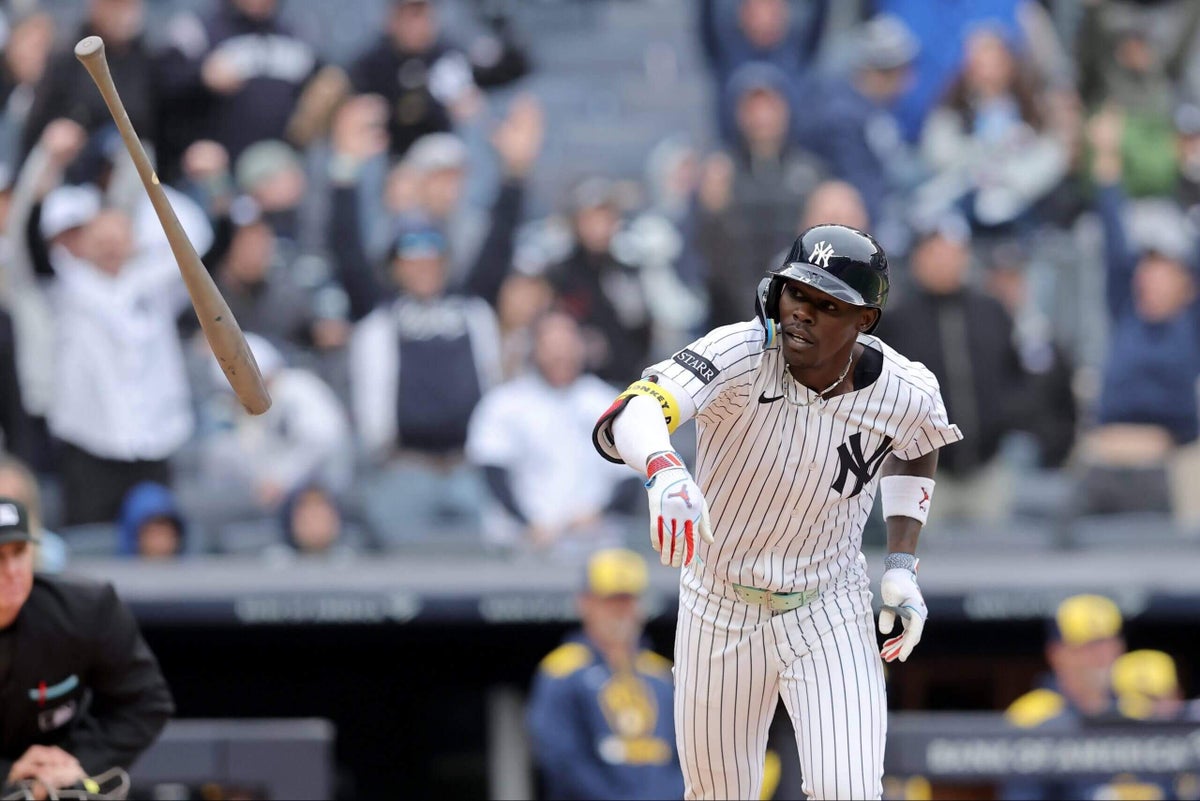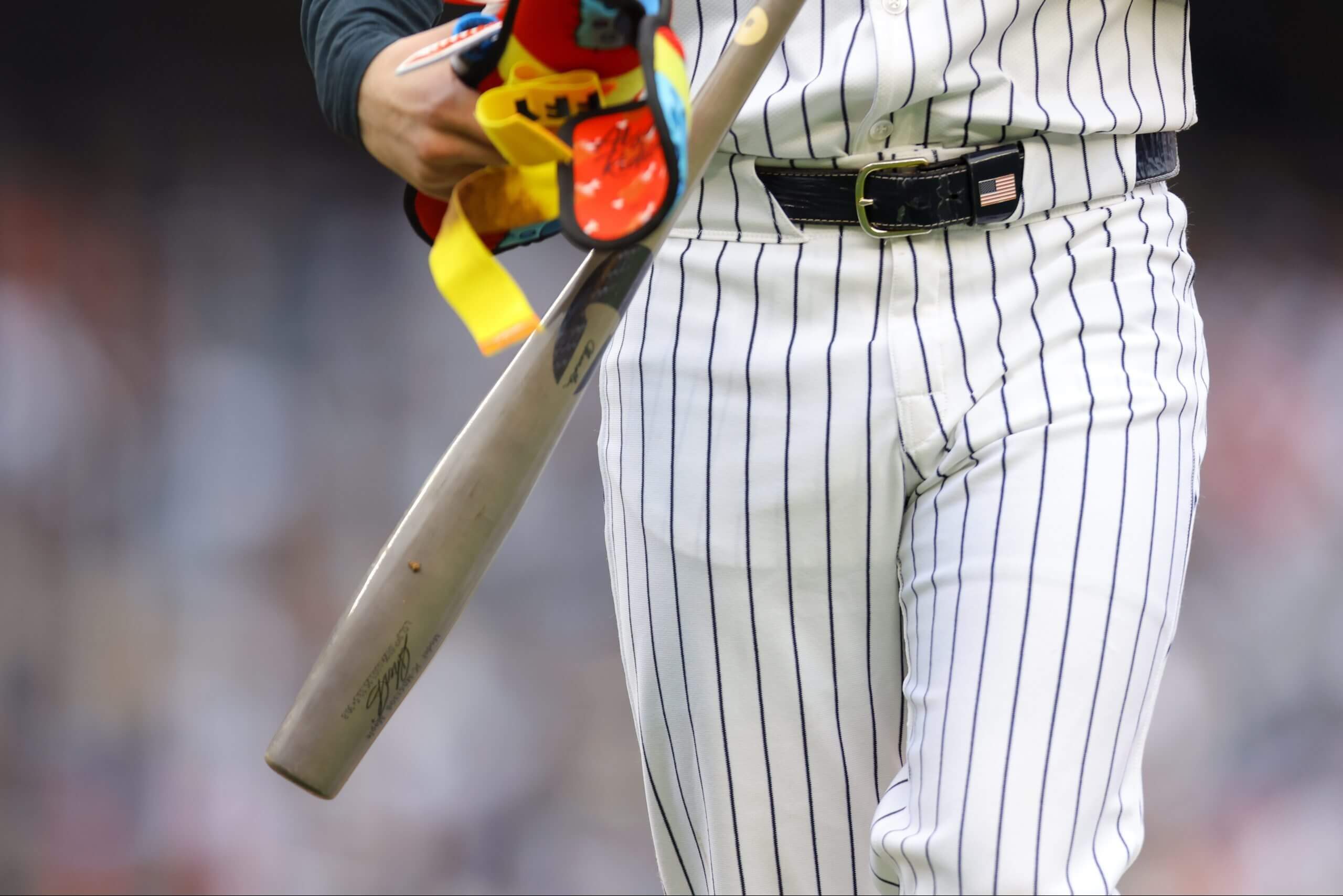MILWAUKEE — Six months after their imprecise pitching ignited a craze, the phrase “torpedo bats” can still inspire smirks and groans from the Milwaukee Brewers.
“We opened up in New York — and got absolutely pummeled,” veteran pitcher Brandon Woodruff said.
“I would equate it to a boxer walking out in the first round and just getting punched right in the teeth, in the first second of the fight,” reserve infielder Jake Bauers said.
“Well,” owner Mark Attanasio said, “it’s kind of a joke now.”
On the opening weekend of the season, the Brewers endured 27 innings of hell at Yankee Stadium. The pitchers permitted 36 runs and served up 15 home runs. The laser show invited investigation. Just what the heck was going on? The answer appeared to be the composition of the bats wielded by New York Yankees shortstop Anthony Volpe and a few of his teammates. The lumber was shaped like a torpedo, with the densest parts of the bat shifted to where each particular player made the most contact.
The innovation tantalized hitters with the hope of catching up in a sport that had become increasingly dominated by pitchers. All across Major League Baseball, batters beseeched teams to provide them with torpedoes. The frenzy extended to the amateur ranks. Bat companies such as Marucci, Chandler, Louisville Slugger and Rawlings started selling torpedo bats to the public. A representative from Chandler reported “record sales volume in all channels” for the new bats.
They can thank the Brewers for all that business. Asked whether the franchise had considered asking various bat companies for a finder’s fee after generating so much revenue, Attanasio burst into laughter. He was soaking in the relief and delight of defeating the Chicago Cubs on Saturday night and drawing a date with the Los Angeles Dodgers in the National League Championship Series. He scanned the field for the team’s president of business operations, Rick Schlesinger. “We should introduce you,” Attanasio cracked. “That’s a good idea.”
At the time, few on the team were laughing. After that first weekend, it was easy to draw conclusions about the 2025 Milwaukee Brewers. The forecast did not augur a deep postseason run. The club had traded away two-time All-Star closer Devin Williams. The team did not sign a free agent to a multiyear contract. FanGraphs projected the team’s postseason odds at 35.4 percent. Perhaps the franchise’s string of success was coming to an end.
For so many years, the strength of Milwaukee stemmed from its pitching. Even after trading former National League Cy Young Award winner Corbin Burnes, the Brewers produced the fifth-lowest ERA in the majors in 2024. The unit looked far more suspect as this season began. After a hard-luck loss by Opening Day starter Freddy Peralta, the team watched starter Nestor Cortes serve up five homers in a 20-9 defeat, followed by starter Aaron Civale yielding three more homers in a 12-3 pasting.
The Brewers chalked it up to a lost weekend in the Bronx. The rest of the sport marveled at the torpedoes. Some on the team found the interest to be annoying. “It was a media frenzy, an unnecessary thing,” reliever Jared Koenig said. The Brewers’ hitters, at the very least, wanted in on the action.
A close-up view of the Yankees’ Jazz Chisholm Jr.’s bat during the sixth inning against the Brewers at Yankee Stadium on March 30. (Mike Stobe / Getty Images)
“The Yankees had them,” Woodruff said. “And then you see all these other teams start getting them before us. And we’re like, ‘Look, man, I know we’re small-market, but can we get some torpedoes in our guys’ hands?’”
The bats, it turned out, did not alter the course of baseball history. The batting average across the league was .245 in 2025, a slight uptick from last season’s mark of .243. In this era of high velocity and outrageous spin, a new bat can only do so much.
“Everyone in here tried to order one, just to see what it was all about,” Bauers said. “After taking BP and a few at-bats with them, we quickly realized that it wasn’t the bats.”
How the group rebounded from that weekend offered insight into how the team has emerged four victories from reaching the World Series. Roster churn is crucial to the club’s success. The Brewers were not complacent with their flaws. When better prospects emerged in the minor leagues, the team did not hesitate to promote them. And when Civale requested a trade, general manager Matt Arnold landed first baseman Andrew Vaughn, who swatted the go-ahead homer in Game 5 against the Cubs.
Civale had chafed at being moved to the bullpen in June. Part of the reason for the demotion was his 4.91 ERA. Another reason was that Arnold had tweaked the roster in search of improvements. In April, Milwaukee used a competitive-balance pick to acquire Quinn Priester, a 2019 first-round pick languishing in the Boston Red Sox’s minor-league system. The Brewers encouraged him to trust his two-seam sinker to generate soft contact. Priester responded with a 3.32 ERA in 157 1/3 innings.
With Priester occupying a spot in the rotation, the team needed to make room for the 104 mph fastball of rookie Jacob Misiorowski. After Civale asked for a new home, Vaughn supplied an .869 OPS in the regular season and two homers this October.
Vaughn never shared the diamond with Cortes. During the winter, Milwaukee had picked up Cortes and third baseman Caleb Durbin from the Yankees in exchange for Williams. Durbin became a regular at third. Cortes was a bust. He injured his elbow after his second start and missed four months. The Brewers dealt him to the San Diego Padres at the trade deadline for backup outfielder Brandon Lockridge.
By then, Milwaukee was surging toward the best record in baseball. Attanasio pointed to a leaping grab at the center-field wall by Jackson Chourio in May. “A bunch of us and the baseball ops people said, ‘If the season turns, that might be the play,’” Attanasio said.
The Brewers finished only one month this season with a losing record: March, which included those three days at the mercy of the Yankees and the torpedoes. In the aftermath of the sweep, manager Pat Murphy suggested the team would learn from the experience. Bauers thought about that after the club rebounded from a 6-0 defeat to the Cubs in Game 4.
“Maybe if we don’t go through that, we’re not able to get blown out at Wrigley and come back home and win Game 5 and turn the page,” Bauers said. “It removed any doubt about if we were able to bounce back, if we were able to punch back. We really found out who we were as a team.”


